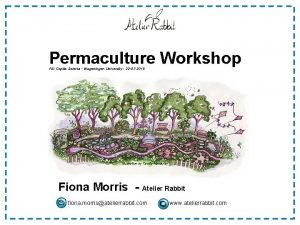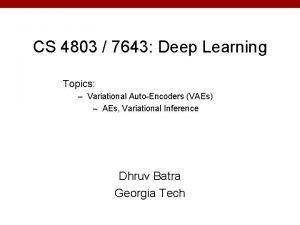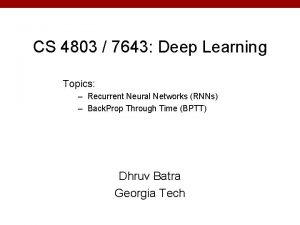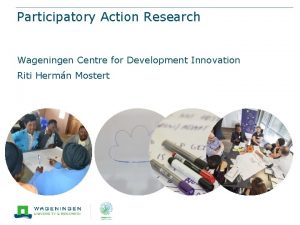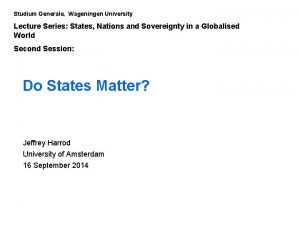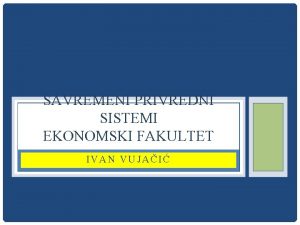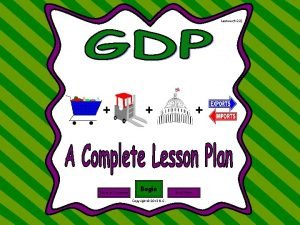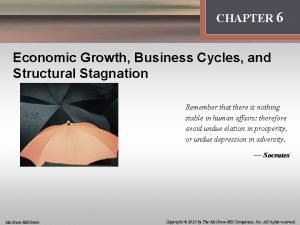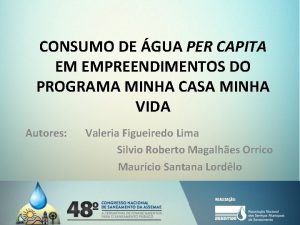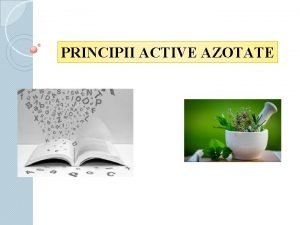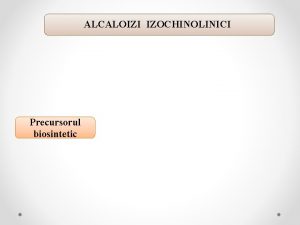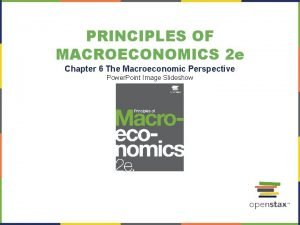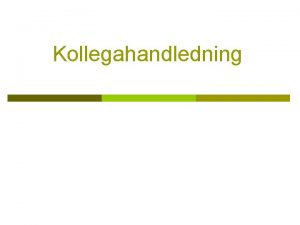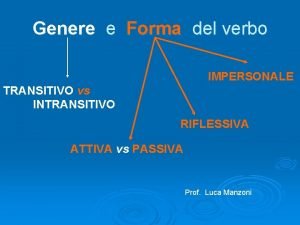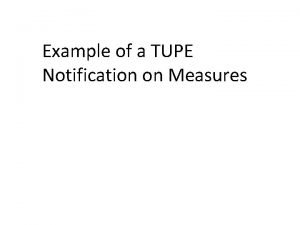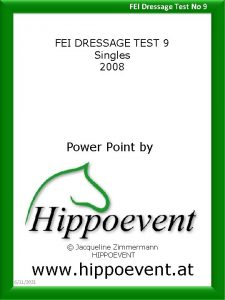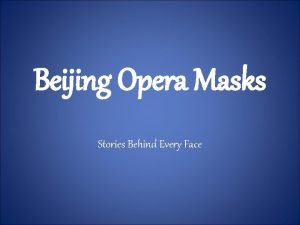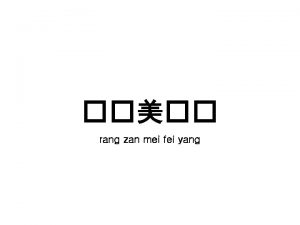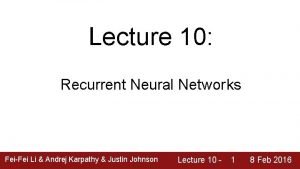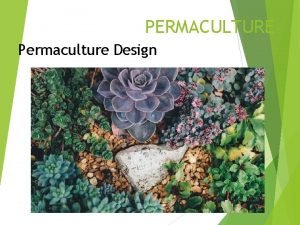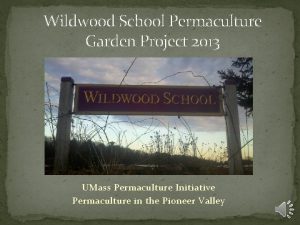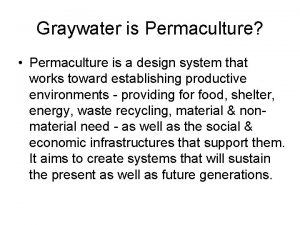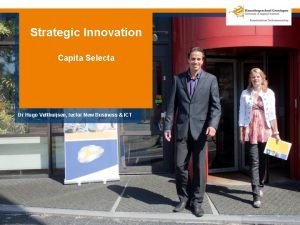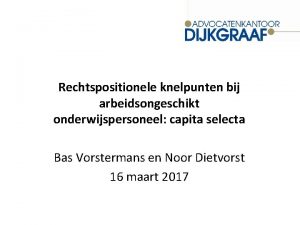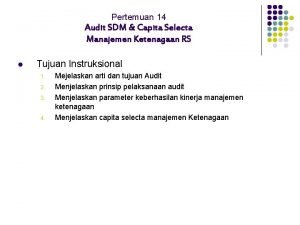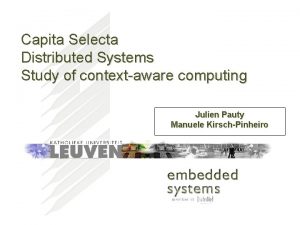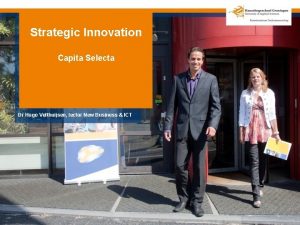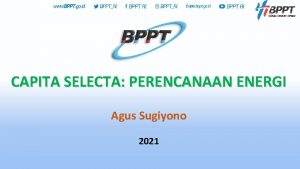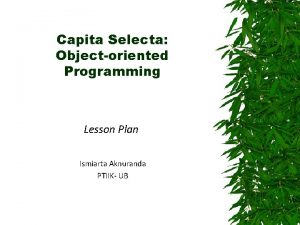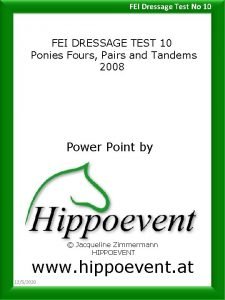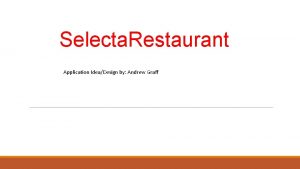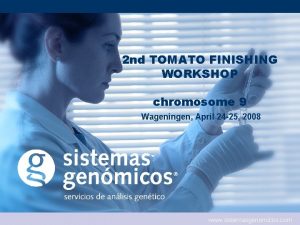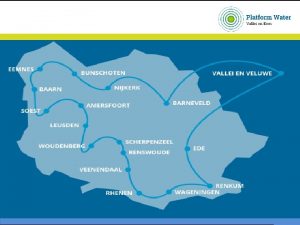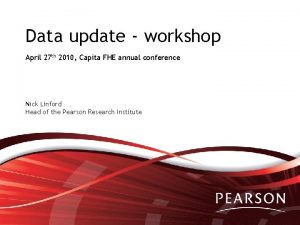Permaculture Workshop FEI Capita Selecta Wageningen University 22
































- Slides: 32

Permaculture Workshop FEI Capita Selecta - Wageningen University - 22 -07 -2015 Illustration by Cecilia Macaulay Fiona Morris - Atelier Rabbit fiona. morris@atelierrabbit. com www. atelierrabbit. com

Overview: What is Permaculture? Design method summary Zoning exercise

PERMANENT AGRICULTURE

Definitions: • . . . the conscious design and management of agriculturally productive ecosystems which have the diversity, stability, and resilience of natural ecosystems. • . . . the harmonious integration of landscape and people providing their food, energy, shelter, and other material and non-material needs in a sustainable way. (Bill Mollison, 1988)

Philosophy: • working with, rather than against, nature; • observation before action; • looking at systems in all their functions, rather than asking only one yield of them; • allowing systems to demonstrate their own evolutions (working with sucession) – self-organisation & ecomimicry concepts.

Concept first published, 1978, Australia ‘Permaculture 1: A perennial agricultural system for human settlements’

How observing natural, sustainable, productive systems. . .

. . . could inspire people to take responsibility through designing productive ecosystems with integral conservation, land repair, and social sustainability

Permaculture design application: Spread from selfsufficiency agriculture to: • • Horticulture Architecture Ecology Economic systems • Land access strategies • Development

‘Permablitzing’. . . (Melbourne, Australia - www. permablitz. net) . . . to painting. . . (City Repair, USA)

. . . and grassroots sustainability movements:

≈ 2015 The Last Oil Shock by David Strahan (2007)

IMF FOOD PRICE INDEX € IMF OIL PRICE INDEX

2 -10 = 1

Alternatives to industrial mono-cropping for the challenge of diminishing resources and biodiversity… BBC Documentary (2009) – www. youtube. com/watch? v

Rebecca Hosking – Devon, UK

Landscape restoration, community, education, & economy… Julius Piti, CELUK project Zimbabwe Chikukwa,

The stream dried-up, and the land was eroding. . . • Help from a permaculture centre stimulated: – return of water flow – land recovery – improved productivity – peer-to-peer learning – an organic, community-based NGO • http: //permaculturenews. org/2013/08/15/the-chikukwapermaculture-project-zimbabwe-the-full-story/ • http: //www. youtube. com/watch? v=j. TMWsj. G 0 N-0

Permaculture design system:

ETHICS EARTH CARE: Care of all living & non-living things – harmless, ethical, & rehabilitative activities. Provision for all life systems to continue and increase. PEOPLE CARE: Provision for people’s basic material and social needs to avoid broadscale destructive practices. Promoting self-reliance & community responsibility. FAIR SHARES: Contribution of surplus time, money, & energy to achieve the aims of earth & people care. Setting limits to population and consumption: by governing our own needs, we can set time and resources aside to further the above principles. (Mollison & Holmgren, 1978)

PRINCIPLES Ecological, attitudinal & spatial design principles such as: Create a yield Let nature do the work Important functions are supported by many components Diversity (for stability) All elements are multi -functional

SYSTEMS ETHICS PRINCIPLES THINKING Interactive components in synergistic, interconnective organisation

AGRO- ECOLOGY TECHNIQUES Animal management Pest management Crop management Weed management Water management Techniques are site & issue dependent – there are no universal templates Cycling of energy/materials Soil management Permaculture Approach

SYSTEMS SECTOR ETHICS ZONING PRINCIPLES ANALYSIS THINKING Systematic assessment of abiotic and biotic influences on the space

ZONING = Energy planning

. . . to mushrooms. The relationship between accessibility and intensity of use of space (input-output). ZONE 0 House/village/centre of human activity ZONE 1 (home garden) 6 -12 m periphery. Frequent use/ high maintenance/ constant observation. ZONE 2 (home orchard) Less intensive animals/perennials/orchard/ structures. ZONE 3 (farm-scale) Broad-scale farming – crops/ water-storage/ managed woodland. ZONE 4 (managed woodland) Wild forage/ fuel - pasture/ range/ water-storage. ZONE 5 (wilderness) Natural/ unmanaged – where you learn the rules to apply elsewhere.

. . . to mushrooms.

. . . to mushrooms.

. . . to mushrooms.

. . . to mushrooms.

. . . to mushrooms. The relationship between accessibility and intensity of use of space (input-output). ZONE 0 House/village/centre of human activity ZONE 1 (home garden) 6 -12 m periphery. Frequent use/ high maintenance/ constant observation. ZONE 2 (home orchard) Less intensive animals/perennials/orchard/ structures. ZONE 3 (farm-scale) Broad-scale farming – crops/ water-storage/ managed woodland. ZONE 4 (managed woodland) Wild forage/ fuel - pasture/ range/ water-storage. ZONE 5 (wilderness) Natural/ unmanaged – where you learn the rules to apply elsewhere.

A few resources: • Introduction to Permaculture, Mollison & Slay • Permaculture: A Designers' Manual, Bill Mollison (WUR library) • Farm for the Future - BBC Documentary (2009) www. youtube. com/watch? v=v. JMgf. Kq. KXw. Y Fordhall Farm - Grass pasture system: www. fordhallfarm. com/fordhall_farm. php? pid=9 Martin Crawford - Agro-forestry Research Trust: www. agroforestry. co. uk • (EN) UK Permaculture Association: www. permaculture. org. uk/ • (NL) Permacultuur Nederland: www. permaculture. org. uk/ • Plants for a Future - database: www. pfaf. org
 Capita selecta wur
Capita selecta wur Fei fei li
Fei fei li Fei fei li
Fei fei li Permaculture ethics
Permaculture ethics Action wageningen
Action wageningen Studium generale wageningen
Studium generale wageningen Rhdhv
Rhdhv Value added approach formula
Value added approach formula Yugoslavia gdp
Yugoslavia gdp Value added approach formula
Value added approach formula Real per capita gdp formula
Real per capita gdp formula A volte capita di trovarsi in un ingorgo mostruoso
A volte capita di trovarsi in un ingorgo mostruoso Capita sims alumni
Capita sims alumni Modern per stirpes
Modern per stirpes Per capita
Per capita Per stirpes v per capita
Per stirpes v per capita Stramonii folium
Stramonii folium Izochinolin
Izochinolin Imf gdp per capita
Imf gdp per capita Calculate nominal gdp
Calculate nominal gdp Qué es el producto interno bruto per cápita
Qué es el producto interno bruto per cápita Per capita vs per stirpes
Per capita vs per stirpes Capita verbo impersonale
Capita verbo impersonale Tupe measures letter example
Tupe measures letter example Capita one system
Capita one system Fei dressage tests
Fei dressage tests Dow fei
Dow fei Yellow signifies ambition fierceness and cool-headedness
Yellow signifies ambition fierceness and cool-headedness Shutterstock
Shutterstock Podemos verificar que o realismo revela
Podemos verificar que o realismo revela Yang zai
Yang zai Moodle fei stu
Moodle fei stu Andrej karpathy
Andrej karpathy
